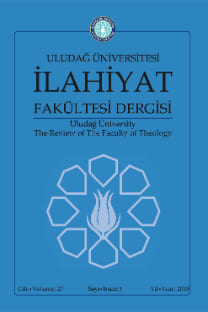Osmanlı Hariciyesinde Eflak Moldava (Boğdan) Vilayetlerinde 20. Yüzyıla Kadar Görevlendirilen Yahudiler
Dinler Tarihi, Yahudiler, Diplomasi, Yahudi Diplomatlar, Gayrimüslim Diplomatlar, Osmanlı Hariciyesi, Romanya Vilayetleri, Eflak, Boğdan (Moldova).
Jews in the Ottoman Foreign Service Dispatched in the Romanian Principalities (Wallachia and Moldova) Until Early 20th Century
History of Religions, Jews, Diplomacy, Jewish Diplomats, Non-Muslim Diplomats, Ottoman Foreign Service, Romanian Principalities,
___
- “Askhenazi, Solomon” Encyclopaedia Judaica (19 Ekim 2020). https://www.encyclopedia.com/religion/encyclopedias-almanacs-transcripts-and-maps/ashkenazi-solomon
- Benjamin, Lya et al.(ed.). Izvoare şi mărturii referitoare la evreii din România. 3 Volumes. 2 Parts. Bucharest: Hasefer, 1999.
- Birnbaum, Marianna D., The Long Journey of Gracia Mendes. Budapest/New York: CEU Press, 2003.
- Dadyan, Saro. “Sultan Abdülaziz, V. Murad ve II. Abdülhamid Dönemlerinin Osmanlı Hariciyesinde Üst Düzey Gayrimüslim Bürokrat ve Diplomatlar”. Milli Saraylar 10 (2012), 66-72.
- Deutsch, Gottahard et al.. “Fonseca (Fonsequa) de or da”. Jewish Encylopedia (Access 19 October 2020). http://www.jewishencyclopedia.com/articles/6222-fonseca-fonsequa-de
- Findley, Carter Vaughn. Ottoman Civil Officialdom, A Social History. Princeton, New Jersey: Princeton University Press, 1989.
- Iorga, Nicolae (ed.). Corespondența lui Știrbei-Vodă Corespondența politică. Bucharest: Minerva, 1904.
- Kayaoğlu, Taceddin. Osmanlı Hariciyesinde Gayr-i Müslimler 1852-1925. Ankara: Türk Tarih Kurumu, 2013.
- Kerem, Yitzchak. “The Sephardic Presence in Romania. Tradition and Modernity”. Romania, Israel, France: Jewish Trails. Volume in Honor of Prof. Carol Iancu. Ed. Lucian Zeev Herscovici et al.. Bucharest: University of Bucharest Press, 2013.
- Kılıç, Musa. “Tanzimat Döneminde Osmanlı Hariciye Nezâreti’nin Ermeni Memurla-rı”. Tarih Araştırmaları Dergisi 31/51 ( Mart 2012), 93-124.
- Lewental, D. Gershon. “Fonseca, Daniel de”. Encyclopedia of Jews in the Islamic World. ed. Norman A. Stillman et al.. (Access 19 October 2020). https://referenceworks.brillonline.com:443/entries/encyclopedia-of-jews-in-the-islamic-world%252Ffonseca-daniel-de-SIM_0007880.
- Lupu, Ioan et al. Bibliografia analitică a periodicelor românești (1851-1858). 2 Volumes. 2 Parts. Bucharest: Printing House of the Socialist Republic of Romania’s Academy of Sciences, 1971.
- Rachieru, Silvana. Diplomaţi și supuși otomani în Vechiul Regat. Relaţii otomano-române între anii 1878-1908. “Al. I. Cuza”. Jassy: University Press, 2018.
- Spielmann, Mihai (ed.). Izvoare şi mărturii referitoare la evreii din România. 2 Volumes. 1 Part. Bucharest: Federation of the Jewish Communities in Romania, Documenta-tion Center, Hasefer, 1988.
- ISSN: 1301-3394
- Yayın Aralığı: 2
- Yayıncı: -
İtham ve Gerçeklik Arasında Kesbî Nübüvvet İddiaları
Nâsır-Lidînillâh Dönemi Abbâsî Vezirleri (575-622/1180-1225)
Toplumsal Cinsiyet Ekseninde Din ve Aile İçi Roller
Sümeyra ÜNALAN TURAN, Vejdi BİLGİN
Kur’ân-ı Kerîm’de İsraf Kavramı ve İnançla İlişkisi
İrfan AYCAN, Saltanata Giden Yolda Muaviye Bin Ebî Süfyan (Ankara: Fecr Yayınları, 1990)
İbrahim Yalvacî’nin Kasîde-i Tantarâniyye Tercümesi
Klasik Arap Edebiyatında Bir Mizah Ögesi Olarak Alem (Özel İsim), Lakap ve Künyeler
Manevi Danışmanlığın Felsefi Temelleri Bağlamında Stoa Ahlak Öğretisi
